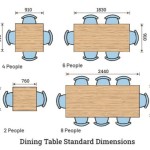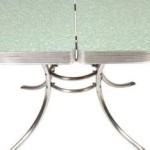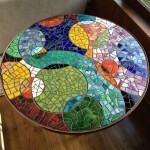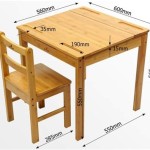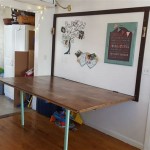Farmhouse Table and Benches Plans: A Comprehensive Guide
The farmhouse table and bench set evokes a sense of rustic charm and communal gathering. Its robust construction and simple, unadorned design make it a popular choice for dining spaces seeking a warm, inviting atmosphere. Building a farmhouse table and bench set offers not only a cost-effective alternative to purchasing new furniture, but also the satisfaction of creating a unique, personalized piece. A variety of online and print resources offer detailed plans for constructing these pieces, catering to different skill levels and aesthetic preferences. This article provides a comprehensive overview of key considerations when selecting and utilizing farmhouse table and bench plans.
Before embarking on a building project, careful planning and preparation are crucial. This includes selecting appropriate plans, gathering necessary materials and tools, and understanding the construction process. Rushing into the project without adequate forethought can lead to errors, wasted materials, and a final product that does not meet expectations. A thorough understanding of the plans and a commitment to accurate execution are essential for success.
Selecting the Right Farmhouse Table and Bench Plans
The first step in building a farmhouse table and bench set is to choose suitable plans. A multitude of options are available, ranging from simple designs for beginners to more complex projects for experienced woodworkers. When selecting plans, several factors should be taken into consideration.
Skill Level: The chosen plans should align with the builder's skill level and experience. Beginner-friendly plans typically involve fewer steps, simpler joinery techniques, and readily available materials. More advanced plans may incorporate intricate details, complex joinery, and require specialized tools. Attempting a project beyond one's skill level can lead to frustration and subpar results. Look for plans that clearly state the skill level required.
Table Size and Bench Dimensions: The dimensions of the table and benches should be appropriate for the available space and the number of people intended to be seated. Consider the room's layout and traffic flow when determining the table's size. Benches should be sized proportionally to the table, allowing adequate legroom and comfortable seating. Many plans offer variations in size, allowing customization to meet specific needs. Ensure the plans clearly indicate all dimensions in an easily understandable format, preferably with both imperial and metric measurements.
Aesthetic Preferences: Farmhouse tables are available in various styles, ranging from rustic and heavily distressed to more refined and contemporary interpretations. Select plans that reflect the desired aesthetic. Factors to consider include the type of wood used, the finish, the leg style, and the tabletop design. Some plans feature breadboard ends, while others have a simpler, flush design. The bench design should also complement the table's overall style. Look at pictures of completed projects based on the plan to assess the final result and ensure it aligns with your vision.
Plan Clarity and Completeness: A well-designed plan should be clear, concise, and comprehensive. It should include detailed diagrams, step-by-step instructions, and a complete list of materials and tools. The diagrams should be easy to understand and should clearly illustrate each stage of the construction process. The instructions should be written in a clear and unambiguous language, avoiding technical jargon where possible. A well-written plan will also include tips and troubleshooting advice to help avoid common mistakes. A comprehensive materials list will specify the exact quantities and dimensions of all lumber, hardware, and finishing supplies needed. A tool list will indicate the specific tools required for each step of the project.
Cost Considerations: The cost of building a farmhouse table and bench set can vary depending on the materials used, the size of the project, and the complexity of the design. Some plans may require more expensive lumber or specialized hardware, which can significantly increase the overall cost. Before committing to a plan, carefully estimate the cost of materials and tools to ensure it fits within the budget. Consider purchasing lumber in bulk to save money and explore alternative materials, such as reclaimed wood, to reduce costs and add character to the finished piece.
Where to Find Plans: Farmhouse table and bench plans are readily available from various sources, including online woodworking websites, woodworking magazines, and books. Many free plans are available online, but these may vary in quality and completeness. Paid plans often offer more detail, better instructions, and technical support. Woodworking magazines and books typically feature well-designed plans with detailed photographs and illustrations. Local woodworking stores may also offer plans and workshops to help builders get started.
Essential Materials and Tools
Once the plans have been selected, gathering the necessary materials and tools is the next crucial step. The specific materials and tools required will depend on the chosen plans, but some items are common to most farmhouse table and bench projects.
Lumber: The type of lumber used will significantly impact the table's appearance and durability. Popular choices for farmhouse tables include pine, oak, maple, and reclaimed wood. Pine is a relatively inexpensive and readily available option, but it is softer than other hardwoods and may be more prone to dents and scratches. Oak is a durable and attractive hardwood that is well-suited for farmhouse tables. Maple is a strong and dense hardwood that is often used for furniture making. Reclaimed wood can add character and history to the table, but it may require more preparation and cleaning. The plans should specify the exact type and dimensions of lumber required for each component of the table and benches. Ensure the lumber is straight, free of knots and defects, and properly dried to prevent warping or cracking.
Hardware: The hardware used to assemble the table and benches should be strong and durable. Common hardware items include screws, bolts, washers, and wood glue. The plans should specify the type, size, and quantity of hardware required. Use high-quality screws and bolts to ensure a secure and lasting connection. Wood glue is essential for creating strong and seamless joints. Choose a glue that is appropriate for the type of wood being used and follow the manufacturer's instructions for application. Consider using decorative hardware, such as antique-style hinges or drawer pulls, to enhance the farmhouse aesthetic.
Finishing Supplies: The finish applied to the table and benches will protect the wood and enhance its natural beauty. Common finishing options include stain, paint, varnish, and polyurethane. Stain can be used to enhance the wood grain and add color to the table. Paint can be used to create a more modern or rustic look. Varnish and polyurethane provide a durable and water-resistant finish that protects the wood from scratches and stains. Choose a finish that is appropriate for the type of wood being used and the desired aesthetic. Apply the finish in thin, even coats, following the manufacturer's instructions. Sand lightly between coats to create a smooth and professional finish.
Essential Tools: A well-equipped workshop will make the building process much easier and more efficient. Some essential tools for building a farmhouse table and bench set include a saw (circular saw, miter saw, or hand saw), a drill, a sander, a measuring tape, a square, a level, a workbench, and clamps. A circular saw or miter saw is essential for cutting lumber to size. A drill is needed for drilling pilot holes and driving screws. A sander is used to smooth the wood surfaces and prepare them for finishing. A measuring tape, square, and level are essential for ensuring accuracy and precision. A workbench provides a stable and comfortable work surface. Clamps are used to hold the wood pieces together while the glue dries. Depending on the complexity of the plans, additional tools may be required, such as a router, a jointer, or a planer.
Key Construction Techniques and Considerations
Successfully building a farmhouse table and bench set requires careful attention to detail and the proper execution of key construction techniques. Understanding these techniques and applying them accurately will ensure a strong, durable, and aesthetically pleasing final product.
Accurate Cutting and Measuring: Accurate cutting and measuring are essential for ensuring that all the pieces fit together properly. Use a sharp saw and a precise measuring tape to cut the lumber to the exact dimensions specified in the plans. Double-check all measurements before cutting to avoid costly mistakes. A small error in one measurement can compound and affect the overall dimensions of the table and benches. Use a square to ensure that all cuts are square and that the pieces are aligned correctly. A miter saw can be used to make precise angled cuts, which may be required for some table and bench designs.
Proper Joinery Techniques: The strength and stability of the table and benches depend on the proper execution of joinery techniques. Common joinery techniques used in farmhouse table construction include mortise and tenon joints, dovetail joints, and screw and glue joints. Mortise and tenon joints are strong and durable joints that are commonly used to connect the legs to the table top. Dovetail joints are decorative and strong joints that are often used for drawer construction. Screw and glue joints are a simple and effective way to join pieces of wood together. Choose the appropriate joinery technique for each connection based on the strength requirements and the desired aesthetic. Ensure the joints are tight and secure before applying glue and screws.
Sanding and Finishing Techniques: Sanding and finishing techniques play a crucial role in the overall appearance and durability of the table and benches. Sand all surfaces smooth before applying any finish. Start with a coarse grit sandpaper and gradually work your way up to a finer grit sandpaper. Remove all sanding dust before applying the finish. Apply the finish in thin, even coats, following the manufacturer's instructions. Sand lightly between coats to create a smooth and professional finish. Allow the finish to dry completely before using the table and benches. Consider applying multiple coats of finish for added protection and durability.
Addressing Common Challenges: Building a farmhouse table and bench set can present various challenges, especially for beginner woodworkers. Common challenges include warping lumber, uneven surfaces, and difficulty with joinery. Warping lumber can be prevented by using properly dried lumber and storing it in a dry environment. Uneven surfaces can be corrected by planing or sanding the wood. Difficulty with joinery can be overcome by practicing the techniques on scrap wood before working on the actual project. Seeking assistance from experienced woodworkers or online forums can also be helpful in addressing these challenges.
By carefully selecting the right plans, gathering the necessary materials and tools, and applying key construction techniques, creating a beautiful and functional farmhouse table and bench set is achievable. The finished product will not only serve as a gathering place for meals and conversations but also stand as a testament to one's craftsmanship and dedication.

Diy Farmhouse Bench Love Grows Wild

Woodsmith Rustic Dining Table Bench Standard Plan Premium Drawings

Beginner Farm Table Benches 2 Tools 20 In Lumber Ana White

Diy 40 Bench For The Dining Table Shanty 2 Chic

Modern Farmhouse Dining Table Benches Erin Spain

How To Build A Farmhouse Table And Benches

Diy Dining Bench With Free Plans The Duvall Homestead

Diy Truss Beam Farmhouse Style Table And Benches

More Like Home Farmhouse Bench Plans

Diy Farmhouse Bench Free Plans Rogue Engineer

